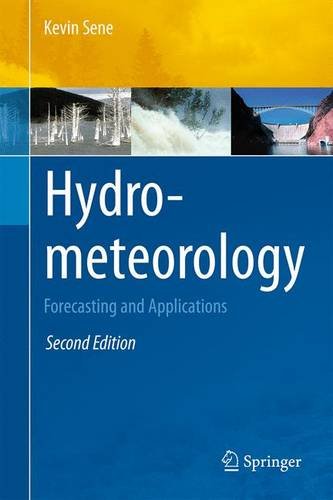

Most ebook files are in PDF format, so you can easily read them using various software such as Foxit Reader or directly on the Google Chrome browser.
Some ebook files are released by publishers in other formats such as .awz, .mobi, .epub, .fb2, etc. You may need to install specific software to read these formats on mobile/PC, such as Calibre.
Please read the tutorial at this link: https://ebookbell.com/faq
We offer FREE conversion to the popular formats you request; however, this may take some time. Therefore, right after payment, please email us, and we will try to provide the service as quickly as possible.
For some exceptional file formats or broken links (if any), please refrain from opening any disputes. Instead, email us first, and we will try to assist within a maximum of 6 hours.
EbookBell Team

0.0
0 reviewsThis second edition explores some of the latest techniques used to provide forecasts for a wide range of water-related applications in areas such as floods, droughts, water resources and environmental impacts. The practical uses can range from decisions on whether to issue a flood warning through to providing longer-term advice such as on when to plant and harvest crops or how to operate reservoirs for water supply and hydropower schemes. It provides an introduction to the topic for practitioners and researchers and useful background for courses in areas such as civil engineering, water resources, meteorology and hydrology.
As in the first edition, the first section considers topics such as monitoring and forecasting techniques, demand forecasting and how forecasts are interpreted when issuing warnings or advice. Separate chapters are now included for meteorological and catchment monitoring techniques allowing a more in-depth discussion of topics such as weather radar and water quality observations. The chapters on meteorological and hydrological forecasting now include a greater emphasis on rainfall forecasting and ensemble and probabilistic techniques. Regarding the interpretation of forecasts, an updated chapter discusses topics such as approaches to issuing warnings and the use of decision support systems and risk-based techniques.
Given the rapid pace of development in flash flood fore
casting techniques, flash floods and slower responding riverine floods are now considered in separate chapters. This includes more detail on forecasting floods in large river basins and on methods for providing early warnings of debris flows, surface water flooding and ice jam and dam break floods. Later chapters now include more information on developing areas such as environmental modelling and seasonal flow forecasting. As before examples of operational systems are provided throughout and the extensive sets of references which were a feature of the first edition have been re